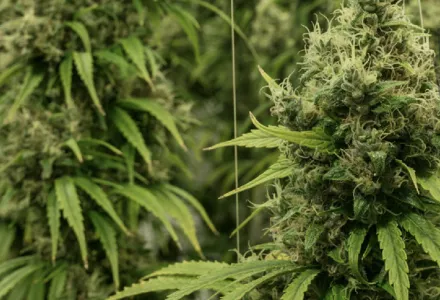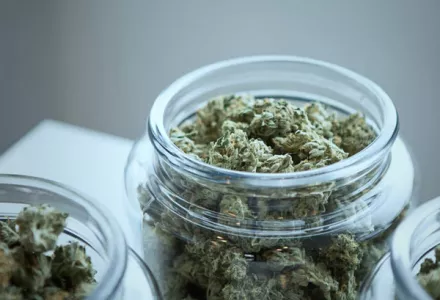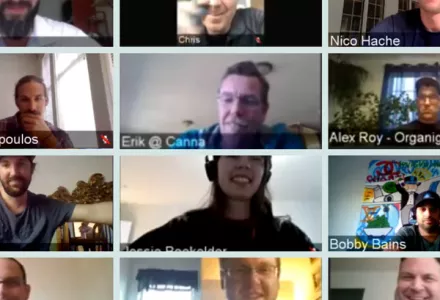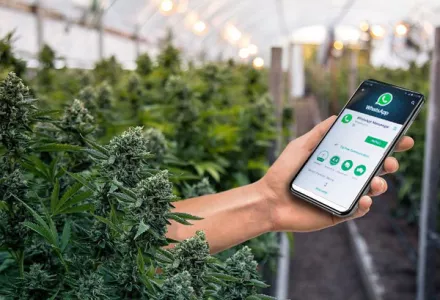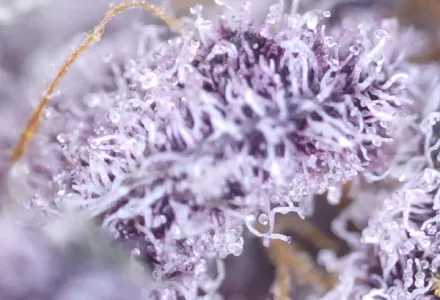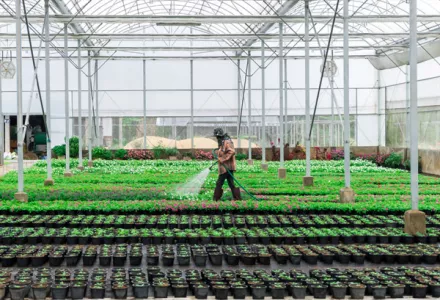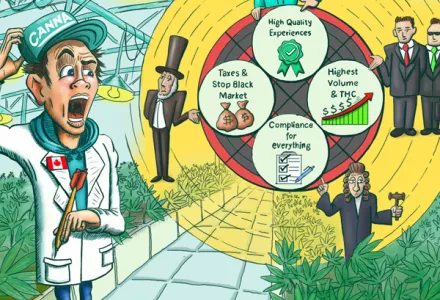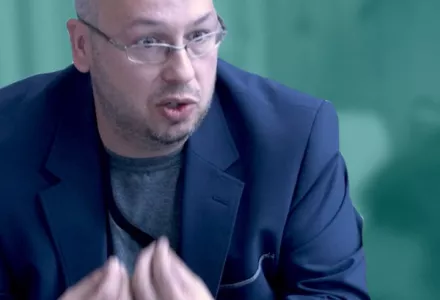Do the names of these pests and diseases strike abject fear in your cannabis grower's heart? Names like Spider Mites, Thrips, Aphids, Powdery Mildew, Fusarium or Pythium.
While there are many threats to your cannabis plants, you fortunately have more than just one solution. Integrated Pest Management offers a better way to combat pests and disease than relying on pesticides alone.
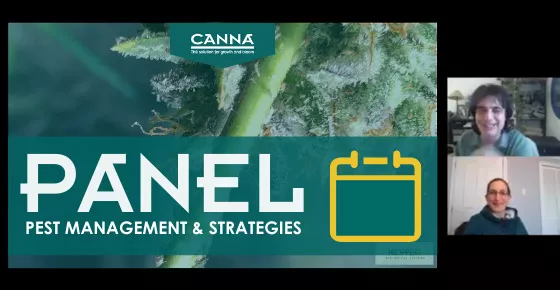
This article is based on the highly informative "Pest Management And Strategies" session at the November 2020 online CANNAtalk experience hub.
The main speaker was Andrea Keddy, who is the Western Technical Consultant with Koppert Biological Systems, focusing on Integrated Pest Management and biological controlling crops for 10 years, with greater involvement treating cannabis for the past four years.
Also presenting was Claude Robert, Sales Representative and Technical Advisor for Anatis Bioprotection. Claude has been working for this Canadian company since 2018, especially in the cannabis sector. But Claudes experience also comes from personal interest and experience decades before joining Anatis.
What Is Integrated Pest Management?
Integrated Pest Management, abbreviated as IPM, is well-defined by the United States's Environmental Protection Agency as:
... an effective and environmentally-sensitive approach to pest management that relies on a combination of common-sense practices. IPM programs use current, comprehensive information on the life cycles of pests and their interaction with the environment. This information, in combination with available pest control methods, is used to manage pest damage by the most economical means, and with the least possible hazard to people, property, and the environment.
The EPA website goes on to describe how growers who follow IPM don't freak out when they see a single pest, but instead follow a 4-tiered plan, where action is only taken when pests are severe enough to cause damage to the crop. The EPA describes the process and value of the four steps so well that we share them word-for-word:
1. Set Action Thresholds
Before taking any pest control action, IPM first sets an action threshold, a point at which pest populations or environmental conditions indicate that pest control action must be taken. Sighting a single pest does not always mean control is needed. The level at which pests will either become an economic threat is critical to guide future pest control decisions.
2. Monitor and Identify Pests
Not all insects, weeds, and other living organisms require control. Many organisms are innocuous, and some are even beneficial. IPM programs work to monitor for pests and identify them accurately, so that appropriate control decisions can be made in conjunction with action thresholds. This monitoring and identification removes the possibility that pesticides will be used when they are not really needed or that the wrong kind of pesticide will be used.
3. Prevention
As a first line of pest control, IPM programs work to manage the crop, lawn, or indoor space to prevent pests from becoming a threat. In an agricultural crop, this may mean using cultural methods, such as rotating between different crops, selecting pest-resistant varieties, and planting pest-free rootstock. These control methods can be very effective and cost-efficient and present little to no risk to people or the environment.
4. Control
Once monitoring, identification, and action thresholds indicate that pest control is required, and preventive methods are no longer effective or available, IPM programs then evaluate the proper control method both for effectiveness and risk. Effective, less risky pest controls are chosen first, including highly targeted chemicals, such as pheromones to disrupt pest mating, or mechanical control, such as trapping or weeding. If further monitoring, identifications and action thresholds indicate that less risky controls are not working, then additional pest control methods would be employed, such as targeted spraying of pesticides. Broadcast spraying of non-specific pesticides is a last resort.
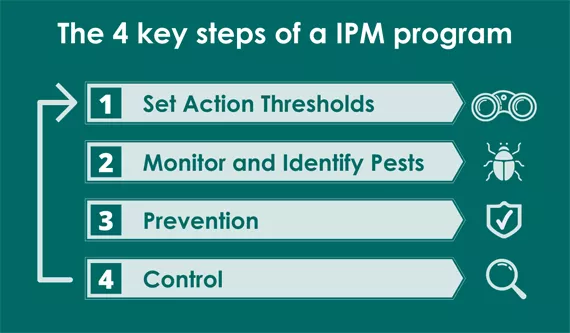
The idea that pesticides are used as a solution of the last resort is very appealing to cannabis growers, who as a rule tend to be more earth friendly, and especially because pesticides can make their cannabis products less healthy to smoke or eat. Pesticides can make people who consume them sick, but pesticides that are heated for smoking can become dangerous. For example, a popular pesticide, myclobutanil, changes when heated into the poisonous chemical hydrogen cyanide. Pesticides can also make the people who work in cannabis facilities sick, too.
There is also increasing regulation of pesticide use, in Canada and the U.S.A. Health Canada says this about pesticide use on cannabis: "Section 81 of the Cannabis Regulations prohibits treating cannabis with a PCP unless the PCP is registered or otherwise authorized for that use under the Pest Control Products Act." If you want to know more about how Health Canada regulates pesticide use on cannabis, go here.
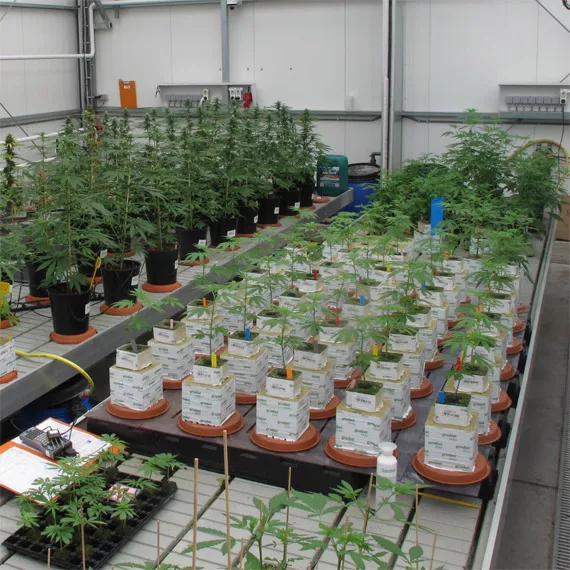
How cannabis plants require different IPM approaches that emphasize prevention
Andrea Keddy discussed two ways IPM for cannabis is different than for other crops like fruits and vegetables. While she barely mentioned how the first item, legislation (that things allowed into the crop for pest and disease control are different than for other crops), about the second item, Andrea shared in much greater detail how the cannabis plant itself causes big differences in viable IPM approaches.
So IPM for cannabis, because we're a little bit limited on some of the tools that we can use in contrast to other crops, prevention is really the biggest key.
- Andrea Keddy
The cannabis plant itself is very different from most commercially-grown crops:
- Greenhouse vegetables are typically 12-month crops in continuous, year-long production (for which there are lots of proven IPM methods and experience), whereas cannabis has a 9-to-12 week flowering period, after which the entire plant is harvested. That means the lifespan and longevity of biocontrols used on cannabis plants are also shorter.
- Cannabis plants, unlike food crops, don't have nectar and pollen, nor very many leaf hairs. Which matters, because predatory mites, that are a very big part of most biological control programs, side feed on nectar and pollen, and lay their eggs in leaf hair tips. Those differences limit the reproduction of beneficial predatory mites on your plants, causing the need for reapplication of beneficial insects.
- Cannabis terpenes also have insecticidal properties that can prevent beneficial predatory mites from eating thrips or spider mites or other pests who are in the flower zone. So the unique terpenes that make cannabis great also prevent cannabis from getting protection from damaging pests right when and where you need them the most.
These various differences point again to how prevention is key for cannabis IPM. Which is why Andrea proceeded to provide lots of advice focused on prevention for protecting cannabis crops.
PREVENTATIVE pest and disease control for cannabis plants

You really need to anticipate the problems that are going to arise. Even the best of growers will have some issues, and that's not about being a good grower, that's just nature coming in and doing what nature does. And nature doesn't really like monoculture-type crops, but the pests sure do. From a pest and disease perspective, your crop, your moneymaker is a buffet for them, and they're going to take control and do damage if you don't have a preventative type of approach.
- Andrea Keddy
IPM for the various stages of your cannabis growth cycle
Prevention for Clones
Place your new clones into a quarantine zone, even if you get a really clean stock from really fantastic growers. That's because there's a couple of threats that you won't see on those young plants as you bring them in.
One of them is thrips, a very common North America insect pest that's a bit difficult to see because they lay their eggs underneath the tissue of the plant. Imagine if after about a week on site your brand new plants that were put in with some existing mothers that you suddenly have a big problem with thrips because there was a hatch out that came out of the tissue that was unseen.
Another threat on the disease side is powdery mildew. When we do see powdery mildew as growers, what we're actually seeing is more or less the final stage of the reproductive part of that disease, because it's already living on the internal plant tissue.
So the preventative practice of quarantining new clones is recommended to eliminate painful, major problems that could damage your entire crop.
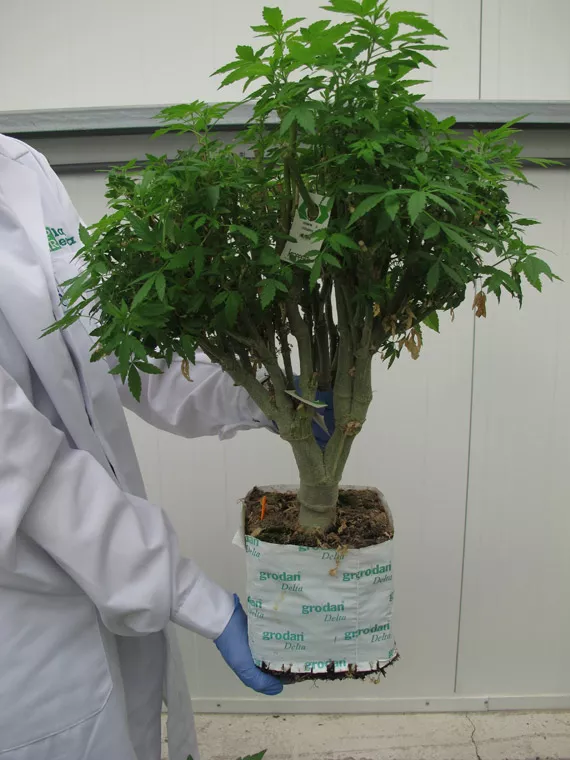
Clean Mother Plants Means Clean Production Plants
It's really important for your IPM program to give some really critical thought before you even have plants on site. Put a large amount of time and effort and care into your mother plants, because everything that comes off of those goes into your production. Anything that's dirty or affected in the mother stage, you can expect to see that coming through somewhere along down the road; you may not see it in the vegetative state, but you will, more than likely, see it come through on the flowering side.
Sprays During Quarantine Period
During the 10 to 14 day quarantine period, there are some insecticide and fungicide sprays that can be used in Canada against thrips and aphids, in that young plant stage. If your roots are formed nicely, there's not going to be too much damage on your plants. You may see some phytotoxicity with some of the more soap or oil based type products. But as long as you've got a really good strong healthy root structure already there, a lot of times you can grow out of it. Many of those approved products, they're a bit more broad spectrum as opposed to some of the targeted stuff that is not registered for Canada right now. Soap or oil-based sprays will suppress all insects, good or bad. So if you have some thrips just starting to show up, it might be a good idea to do some of those preventative sprays, and then transition into a biological program once you've brought those pest numbers down to a point that is manageable.
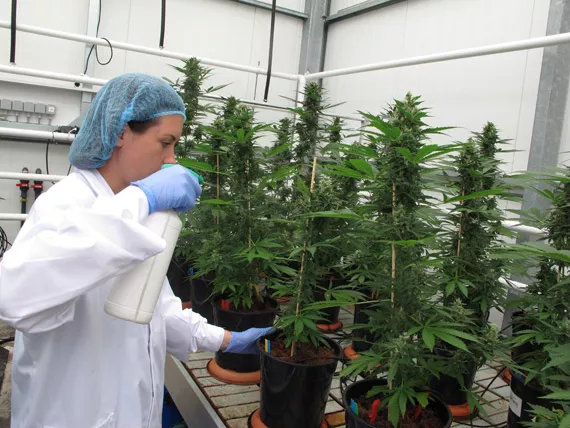
Pest Control Much Harder During Flowering Stage (So Prevention Before Then Even More Important)
During the flowering stage, you cut your photoperiod down to a 12-hour light cycle. This is one of the indicators of end of season for a lot of insect pests. It signals these insects to winterize to be able to carry over.
By having a limited photoperiod (during flowering), you can actually sometimes accelerate and exemplify some of those issues that may be in the crop already.
- Andrea Keddy
As you lower relative humidity approaching the flowering stage, it may become more and more difficult to get your beneficial insects to do what you want them to do. So again, that's why having that really, really clean start is the most important. For example, predatory mites(which control thrips and spider mites), the lower the relative humidity, the less your predatory mites will reproduce by themselves. Which would be cheaper for you as a grower because you don't have to keep buying more and reapplying them.
And spraying in the flower period can damage the pistils that are developing, the nice little hairs on the buds. When we damage those pistils, that can then lead to botrytis in the late flowering period.
Dealing with the Big Threat of Cannabis Aphids
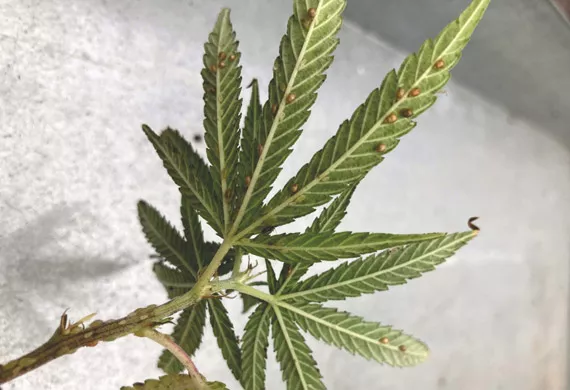
Both Andrea and Claude emphasized how the cannabis aphid has emerged as a top threat to cannabis crops in Canada. Cannabis aphids can endanger your crops for many reasons:
- Much of the year, cannabis aphids are females that are born pregnant. Thus, they reproduce rapidly, growing exponentially from a few insects to an infestation.
- Cannabis aphids hurt your cannabis plants multiple ways:
- They suck the sap out of plants, making leaves wilt or yellow, grow slower, and become more vulnerable to disease.
- They infect plants with viruses as they feed.
- They produce honeydew, rich in sugars, that increases growth of black fungal or sooty mold that can kill your plants and make them unsafe to smoke.
- The honeydew also attracts ants that, in order to better feed on aphid's honeydew, will protect aphids from their predators.
Natural enemies of cannabis aphids include green lacewings, parasitoid wasps, lady bugs, predatory midges and hoverflies.
Claude's experienced advice to get control of cannabis aphids was the "power trio" combination of three biocontrols:
- The fungus Beauveria bassiana (whose spores cause white muscardine disease in the aphids).
- Green lacewings (a beneficial predatory insect, whose larvae feed on aphids, plus spider mites and thrips as a bonus) especially since green lacewings are not affected by Beauveria bassiana.
- Aphidius matricariae, a parasitic wasp, whose larvae develop inside the host aphid.

Preventing Disease From Drip Lines
Fusarium and pythium are the top two diseases that can come in through your drip lines, usually from recirculation. If one plant already has some fusarium present, and then your drain goes back to the recirculating tank and then goes through the system again, if you don't have good sterilization through that section, you'll easily spread pythium and fusarium that way.
To combat that, there are Health Canada approved fungicides, Trichoderma being one of them, that work by two methods. They attack the cellular structure of the disease and collapse those cell walls, so that they kill that pathogen themselves. But they're really fabulous on a preventative level, because they form a symbiotic relationship with the plant. These beneficial fungicides feed off of the plant exudates without harming the plant itself. And when you do it as a preventative application you get the beneficial fungi target the negative fungi and out compete for the space.
Learn more: Things to be aware of (including diseases) when using recirculating system
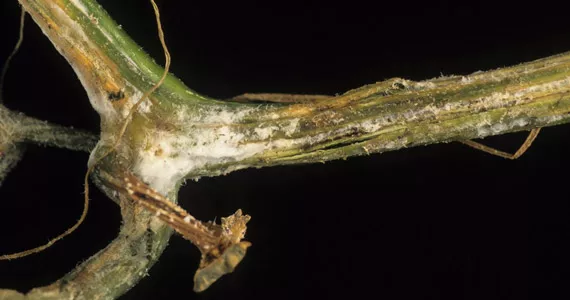
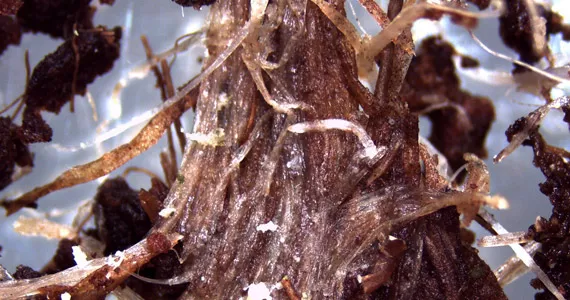
Prevention is the Key To IPM for Cannabis
IPM is a viable, even preferable way to combat the pests and diseases that would wreck your cannabis crop. It's a proven system with decades of success in food crops with an expanding number of methods for cannabis. But most of all, it's a focus on using biocontrols in a preventative, rather than a reactive fashion. Andrea Keddy summarizes that philosophy like this: "I'm always looking at it very preventatively: have your good soldiers on board before the enemies show up."
Learn more: Why and how CANNA made their coco disease-free
Have Questions? Join our LinkedIn Group!
If you didn't understand everything in this article and would like to ask questions about it or anything else related to growing cannabis, request to join our CANNAtalk Passionate Growers LinkedIn group by going here.

Request To Join Our LinkedIn Group
We welcome Canadian growers from all walks of life, whether you're a home grower, craft grower, Licensed Producer, or a consultant. So long as you grow with passion and want to share your passion with other growers, you're welcome to be a part of the community. We'll also notify you whenever we post new articles that might interest you and your fellow passionate growers.
Learn more about pest and disease from CANNA many years of research
CANNA Research on specific pests and diseases:
- Spider mites
- Thrips
- Aphids
- Oidium and mildew, and more here
- Fusarium

